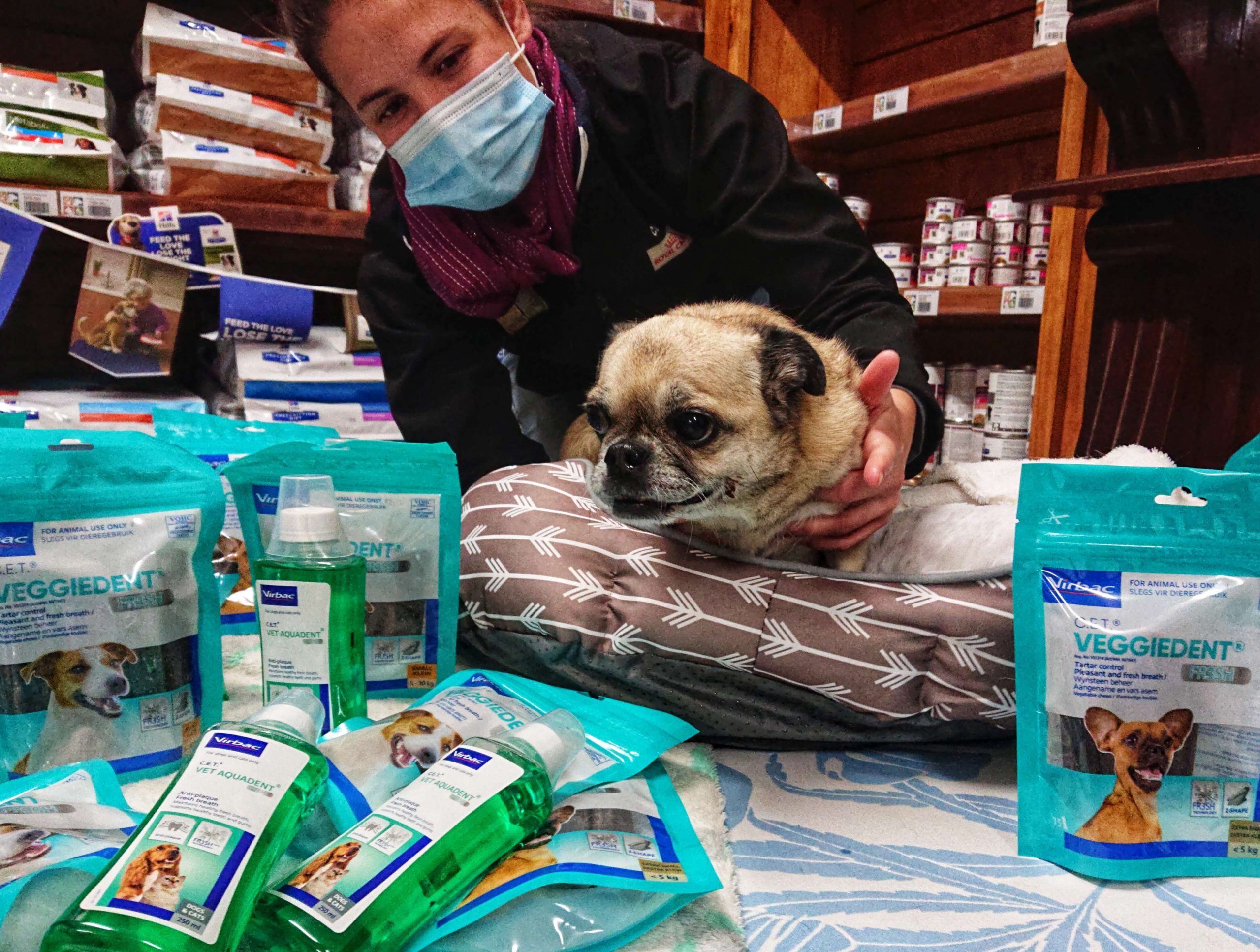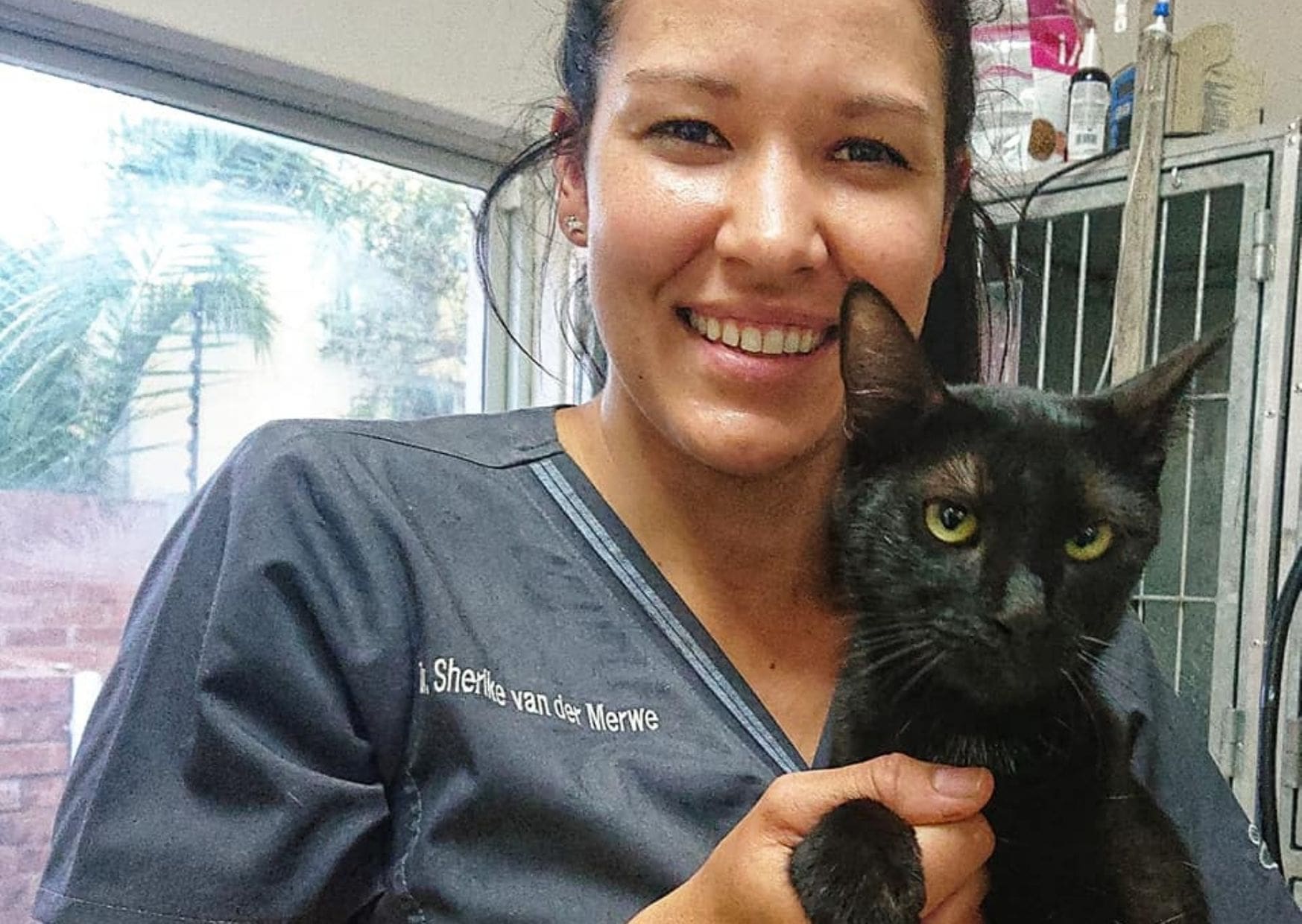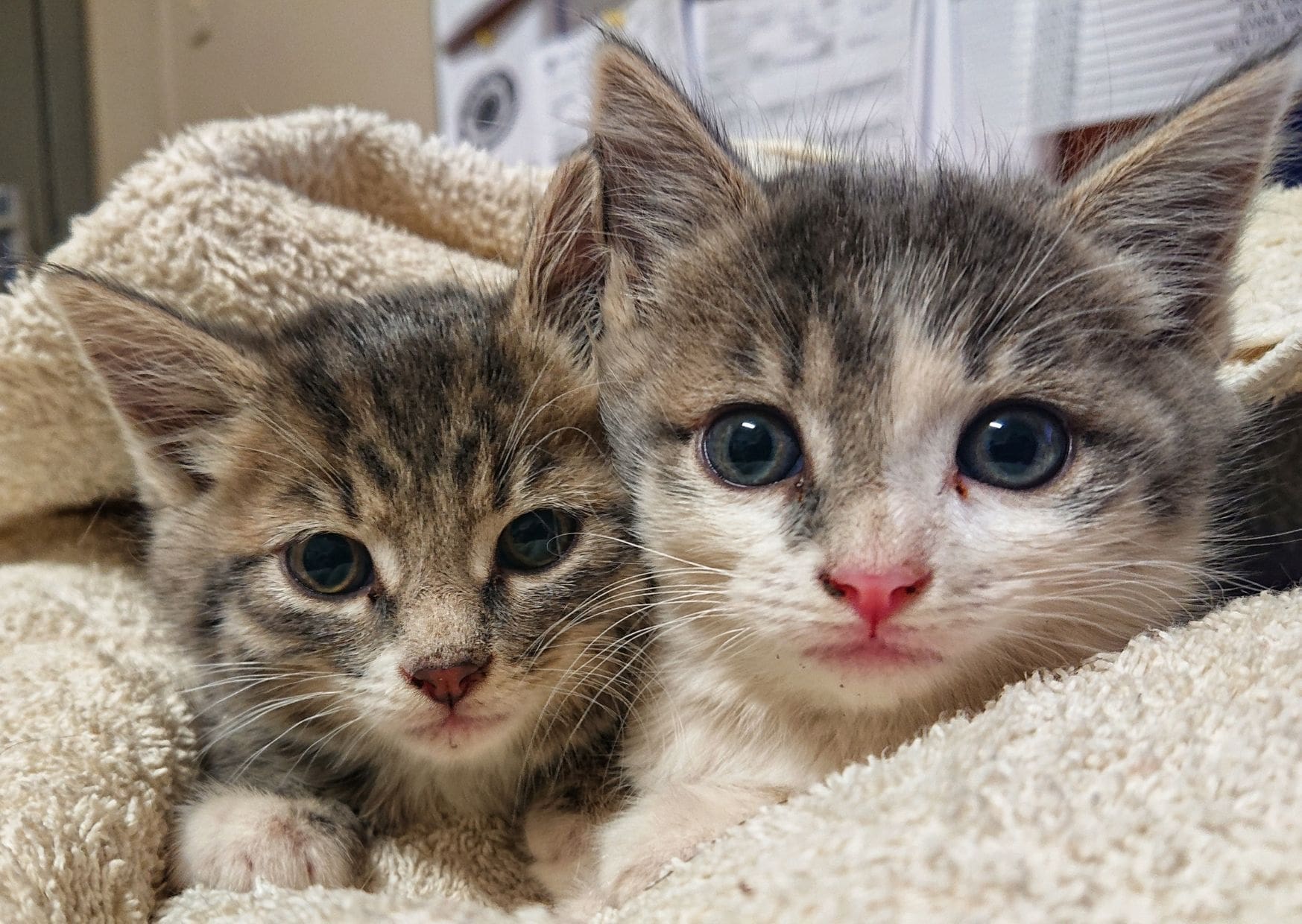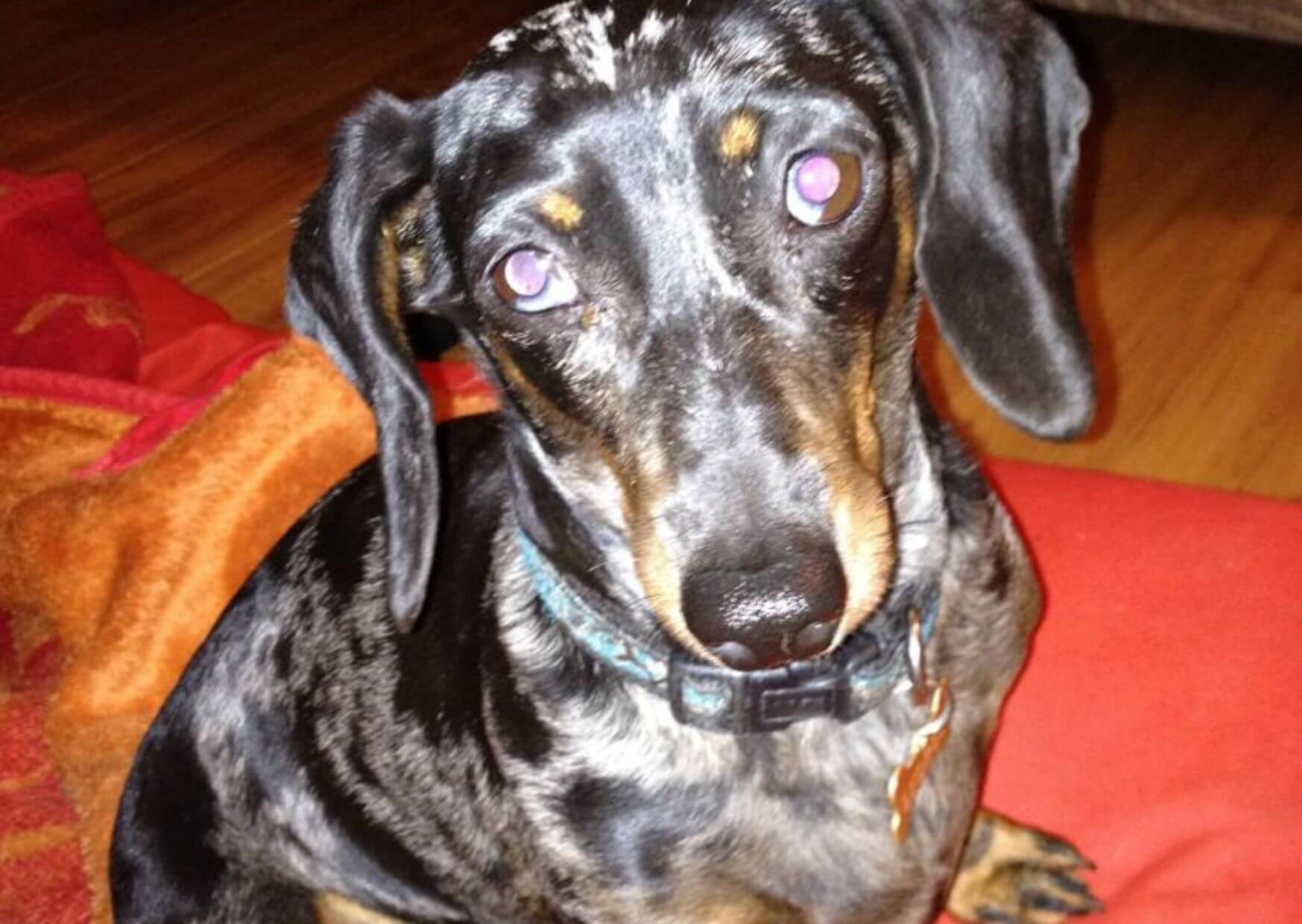by Rina Van Eeden | Mar 27, 2023 | Cats, Dogs
Your pet has been bitten by a snake… What now?
We can attest that this is of every pet owner’s worst nightmare. One of them at least.
Snakes become more active once the weather warms up. There is a steep increase in snake bites during warmer weather, and we have seen an enormous amount of snake bite cases over the last few months.
To make this even worse, there is no antivenom available anywhere in South Africa.
A snake bite is classified as an emergency. This means that you need to get your pet to a vet ASAP. They will be treated promptly with intravenous fluids and antivenom, should there be available.
The first question we’re going to ask is, what snake was involved? This information is very important as it greatly influences the prognosis and treatment plan. There is no need to kill the snake, this places you and your pet at unnecessary risk. A basic description of the snake will do just fine.
Another will be whether your pet has received antivenom before, this could also influence the treatment plan.
Most pets are bitten around the face and limbs. Some have venom spat into their eyes, in this case, try to rinse your pet’s eyes with running water if they allow, then get to the vet for further treatment.
Snake Bite Symptoms To Look Out For:
While you may not always see the bite marks, there are some key symptoms to look out for.
Profuse salivation, swelling, especially around face, neck and limbs, rapid and shallow breathing, shivering/shaking, vomiting, dilated pupils, weakness and in severe cases, total collapse.
Symptoms will vary depending on the type of snake. Some are cytotoxic (eg. Puff Adder), others neurotoxic (eg. Cape Cobra) and haemotoxic (eg. Boomslang).
If you suspect your pet has been bitten by a snake, call your vet ASAP. Snake bites are emergencies, and the quicker the treatment can begin, the better the chances are for survival.
While we realsie that this is not always possible, preventing a snake encounter is best. If you encounter a snake on your daily walk, stop moving and slowly retreat, giving the snake room to escape. Do not allow your dog to sniff at the snake. If you’re in a known snake habitat, keep your dog on a leash, and preferably keep to open trails where snakes are easier to spot. If your dog is particularly curious and pawing at something, call them away from the area.
Prevention is better than cure, and it is better safe than sorry.
For more information on snakes and snake bites, please visit the African Snake Bite Institute website: https://www.africansnakebiteinstitute.com/snakebite/#pets
Like this:
Like Loading...
by Rina Van Eeden | Sep 21, 2022 | Cats, Dogs
It’s no surprise that, out of all the members of our family, our pets’ dental care is the most neglected. They cannot brush their teeth or floss and this goes on, in many cases, for years.
Dental care forms as important a part of primary animal healthcare as vaccinations or sterilisations. And, as with vaccinations and sterilisations, neglecting to pay attention to dental health can, and will, have disastrous and extremely painful results.
This is one of the primary reasons that teeth are pulled when you bring your pet in for a dental cleaning.
It is important to address the problem before it progresses too far.
In a normal mouth, teeth are white, or near white, and the gums attach smoothly to each tooth. Plaque is collected on the tooth daily, but is brushed and flossed away. This ensures it never mineralises to tartar.
Tartar is solid and gritty; it is also filled with bacteria. This stops the natural mechanism of tooth cleaning and leads to tenderness and inflammation around the tooth and gum.
This process eventually leads to periodontal disease.
What Is Periodontal Disease?
Periodontal disease is a disease around the outside of the tooth. The gum around the tooth forms pockets due to loose ligaments that are supposed to keep the tooth firmly in place. Food, grass, hair and subsequently bacteria fill those pockets. This leads to infection, even more pain, inflammation, and eventually severe gum recession from the base of the tooth.
Severe tartar build-up compromises blood flow to the tooth and destroys the integrity of the root of the tooth. This also compromises bone in which the tooth sits.
Bone loss and severe periodontitis, once it has begun, cannot be reversed. This is why many teeth need to be removed, but this also increases the risk of jaw fractures due to severely compromised bone. Rotten teeth that are no longer attached to the gum and that are filled with bacteria and tartar cause an unimaginable amount of pain. Those teeth that simply cannot be saved need to be removed entirely in order for your pet to be pain free.
Some common reasons for tooth extractions include:
- severe periodontal disease,
- broken teeth,
- severe gum recession and tooth resorption,
- certain inflammatory conditions and advanced caries/cavities.
In young dogs and cats, deciduous teeth, or persistent baby teeth, are also strong indicators for tooth extraction.
Believe when we say, we would love to save as many teeth as we can during a dental, but we would much rather have your pets be happy and pain free. If removing a tooth can do that, then that is indication enough.
Not to mention, all that bacteria sitting in the mouth gets transported to other areas of the body, leading to secondary infections or abnormalities of the heart, liver and kidneys. Virtually anywhere where the blood flows…
If these facts aren’t enough to scare any pet owner into action, then we don’t know what is.
The best way to prevent these things from happening is to start home dental care from the early stages of your pet’s life.
This includes brushing your pet’s teeth at least twice weekly, using oral gels and wipes, providing safe dental treats and chews and perhaps even considering putting your pet on a dental specific diet.
Remember, do not neglect your pet’s dental health. Imagine how you would feel if you don’t bush your own teeth for 10 years…
For more information on pet dental care, visit our blog: https://kimvet.co.za/dental-disease-in-pets/
or the trusted petMD website: https://www.petmd.com/dog/grooming/evr_dg_oral_hygiene_and_your_dogs_health
Like this:
Like Loading...

by Rina Van Eeden | May 19, 2021 | Cats, Dogs
Dental disease is a reality. Keeping your pet’s teeth clean is important to their overall health. Imagine how your teeth would look and feel if you didn’t brush them for years, or even just a few weeks!
Ever since cats and dogs became domesticated, their natural source of “dental floss” and teeth cleaning has been mostly removed from their diet. Canned and dried foods, the nutritional replacement for your pet’s traditional diet, does not provide the same level of oral hygiene.
Dental Disease
Dental disease is an infection of the teeth, gums and surrounding structures. It is by far the most common major health problem of cats and dogs.
It starts with a build-up of plaque which eventually turns to tarter. This quickly forms small pockets where an animal’s gums meet its teeth. The gums can separate from the tooth and this allows more bacteria and food to accumulate. This build-up leads to periodontal disease. These pockets allow bacteria to enter the bloodstream. If left untreated, it will lead to more serious health problems like heart and kidney disease
Symptoms of Dental Disease
Symptoms of dental disease include bad breath, lethargy, inactivity or depression, poor grooming, excessive salivating, inflamed gums, decreased or loss of appetite and weight loss. Other issues include dropping food while eating, facial swelling, discharge from the nose or eyes and pawing at the face. Sometimes the teeth just become so rotten that they become loose and fall out on their own!
The key to managing dental disease is prevention. Regular oral examinations and dental cleanings are recommended for all adult dogs and cats.
Daily tooth brushing is the best way to slow the onset of dental problems. Feeding dry dental diets or dental chews may slow down the development of recurrent periodontal disease, but it will not completely prevent it. Daily use of products like oral gels and rinses may aid in keeping your pet’s teeth and gums clean and healthy.
For more information on brushing your pet’s teeth, talk to one of our stellar veterinarians or reception staff about developing a dental care plan for your furry friend.
Like this:
Like Loading...

by Rina Van Eeden | May 4, 2021 | Cats
Did you know that cats need monthly internal and external parasite control, just like dogs?
This is Peggy, she was recently diagnosed with Babesia felis. This is an extremely rare find, especially in our part of the country!
Peggy was brought to our practice for a routine sterilisation. Upon checking our standard “pre-surgery” blood smear, we found some very shady looking red blood cells.
Having our suspicions of what may be the matter with Peggy, we sent blood smears away to the laboratory for further testing. Low and behold, Babesia!
The kicker? Peggy appeared perfectly healthy during the months before and the morning of her spay! Cats are masters at hiding their pain and illness. That is one of the reasons it is so important to bring your cat in for annual check-ups and to stay up to date with their vaccinations, deworming and external parasite control.
Babesiosis is a disease that is transmitted by ticks. It is caused by a parasite which infects red blood cells. It affects a wide range of domestic and wild animals, and occasionally even humans!
Controlling exposure to ticks will help keep your cat healthy and safe, by preventing diseases like babesia and many others that are also caused by internal and external parasites.
There are some great feline specific products available like Broadline, Frontline, Bravecto and Revolution. DO NOT USE ANY DOG PRODUCTS ON CATS!
Be sure to stop by and get some spot-on feline specific advice from one of our friendly receptionists.
For more information about babesiosis in cats, please visit the trusted petMD website – https://www.petmd.com/cat/conditions/infectious-parasitic/c_ct_babesiosis
Like this:
Like Loading...

by Rina Van Eeden | May 4, 2021 | Animal Behaviour, Cats
The thought of tired whiskers may sound silly, but whisker fatigue can be a huge problem for your cat.
Most pet owners see their cat’s whiskers as simply a part of the body. Much like hair!
How Do Whiskers Work?
However, your cat’s whiskers are much more complex. Whiskers, which are called vibrissa, are coarse touch receptors that go far deeper under the skin. They eventually connect with the nervous system. Movement and touch affect the whiskers and send signals to their brain and sensory system. They act like antennas that constantly collect important information about your cat’s environment.
So, what is whisker fatigue? In basic terms, whisker fatigue is simply over-stimulation of the sensory system of the whiskers. When the whiskers are touched too much, even just the basic brushing against food and water bowls, your cat’s brain gets an overload of sensory information. This overwhelming stimulation can make your cat feel stressed. Some of the most common symptoms include refusal to eat or drink from their usual bowls, pacing in front of food bowls and meowing incessantly, pawing at food and water and acting more aggressive around food or treats.
Thankfully, correcting problems associated with whisker fatigue is quite simple. Manufacturers have started producing food bowls that are designed to be whisker-friendly. These dishes have a wider opening and are more shallow than regular food dishes, so your cat’s whiskers do not brush against the sides of the bowl. If you cannot find whisker-friendly pet dishes, feeding your cat in a shallow dish with low sides. These could be plates or saucers, will have the same effect.
In most cases, simple adjustments to how you feed your cat and the dish you use to do so will get rid of any symptoms of whisker fatigue and allow your cat to eat and drink happily.
Like this:
Like Loading...

by Rina Van Eeden | May 4, 2021 | Cats, Dogs, Exotics
Dealing with the loss of a pet can be very difficult. Experiencing the death of a pet can come without notice. Things happen that are unexpected and incredibly painful. When we open our hearts and our homes to our furry, or not so furry, family members, pets and animal companions, we have hopes of a full, happy and healthy life for each of us.
Mostly, that is the case, but sometimes we don’t get that opportunity. Experiencing the death of a pet that is unexpected, sudden and tragic can leave a profound impact on us. So many times we can place unfair guilt on ourselves for the experience, blaming ourselves for what has happened.
Grief isn’t easy when it is expected and is even harder when it is not.
A common phrase we hear among the grieving is that one needs to “find closure”, but convoluted feelings arise when faced with ‘incomplete’ grief experiences. The truth is, many times we as pet owners cannot experience “closure” before being faced with the death of a pet.
Within the grieving process, our brain attempts to make sense of this profound experience. We try to believe that things happen for a reason, even if that reason leads us to blame ourselves. When something goes wrong, it is extremely important to remember that we didn’t plan for it to happen.
It Is Not Your Fault
Guilt is a powerful emotion that has a huge impact on our lives, consciously and unconsciously. Guilt makes us punish ourselves. Throughout the grieving process, we place a massive amount of guilt upon ourselves. This pressure, this guilt, leads to an increase in anxiety and even feelings of panic. We need to remember to allow ourselves to process through our emotions in a healthy way.
It can be easy to lose control quickly when we, consciously or subconsciously, place more and more pressure on ourselves. We can easily feel burdened, overwhelmed and feel that we are unable to meet our daily needs throughout the grieving process.
If you feel this happening to you, it can be helpful to ask ourselves, ”What would my pet want for me?”. Would your pet want you to blame yourself, or would they be understanding with you? Would they want for your happiness regardless of what happened? I would say so, without any hesitation. That’s just how amazing our pets are.
Remember, it is completely normal to experience many different emotions in the beginning of, and throughout the grieving process, especially when it comes to facing the sudden death of your pet.
It is important to experience healthy distractions. A healthy distraction could be as simple as a walk through the park. It may be a close, understanding friend taking us out for coffee and laughing about something small. It may be when you’re reminiscing of fond memories of your pet and smile – it is so important to talk about what you are feeling.
These distractions are fundamental and allow us, even if just for a moment, to unburden ourselves. Grieving is hard work, it is extremely taxing on our body, but it is also a crucial thing to experience.
Grief is a Moment-to-Moment Process
If you take no other advice from this, remember that grief is a moment-to-moment process. It can be too hard to ask for even one day at a time, because a day can seem endless when we feel overwhelmed by our grief.
Remember that in this moment and with every emotion our body is processing through our grief. Please know that you are not alone. We are always here for you.
For more resources on how to cope with your pet’s death, please read this petMD article – https://www.petmd.com/dog/care/coping-your-pets-death-important-guide
Like this:
Like Loading...





